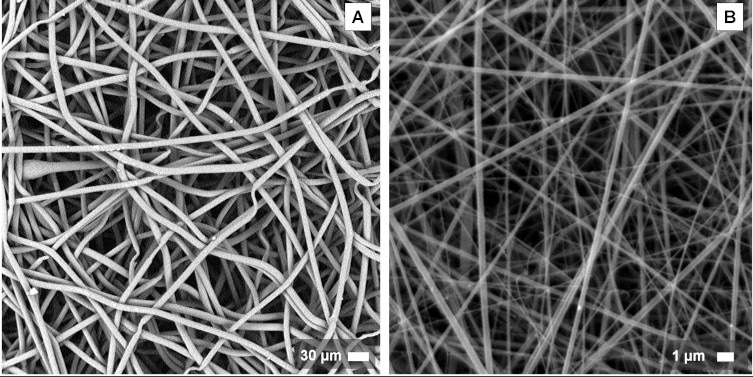The team describes an electrospun mesh as permeable porous model

A novel green method for graphene oxide (GO) reduction via ascorbic acid has been adopted to realize bio-friendly reduced graphene oxide (RGO)/polycaprolactone (PCL) nanofibrous meshes, as substrates for bone tissue engineering applications. PCL fibrous mats enriched with either RGO or GO (0.25 wt%) were fabricated to recapitulate the fibrillar structure of the bone extracellular matrix (ECM) and the effects of RGO incorporation on the structural proprieties, biomechanics and bioactivity of the nano-composites meshes were evaluated. RGO/PCL fibrous meshes displayed superior mechanical properties (i.e. Young’s Modulus and ultimate tensile strength) besides supporting noticeably improved cell adhesion, spreading and proliferation of fibroblasts and osteoblast-like cell lines. Furthermore, RGO-based electrospun substrates enhanced in vitro calcium deposition in the ECM produced by osteoblast-like cells, which was paralleled, in human mesenchymal stem cells grown onto the same substrates, by an increased expression of the osteogenic markers mandatory for mineralization. In this respect, the capability of graphene-based materials to adsorb osteogenic factors cooperates synergically with the rougher surface of RGO/PCL-based materials, evidenced by AFM analysis, to ignite mineralization of the neodeposited matrix and to promote the osteogenic commitment of the cultured cell in the surrounding microenvironment.
A. Marrella, G. Tedeschi, P. Giannoni, A. Lagazzo, F. Sbrana, F. Barberis, R. Quarto, F. Puglisi, S. Scaglione (2018): “Green-reduced graphene oxide induces in vitro an enhanced biomimetic mineralization of polycaprolactone electrospun meshes”. Materials Science and Engineering
All Resources
Never stop learning!
Check publications from the team, protocols, and useful information to boost your research and get into organ on chip technology!

